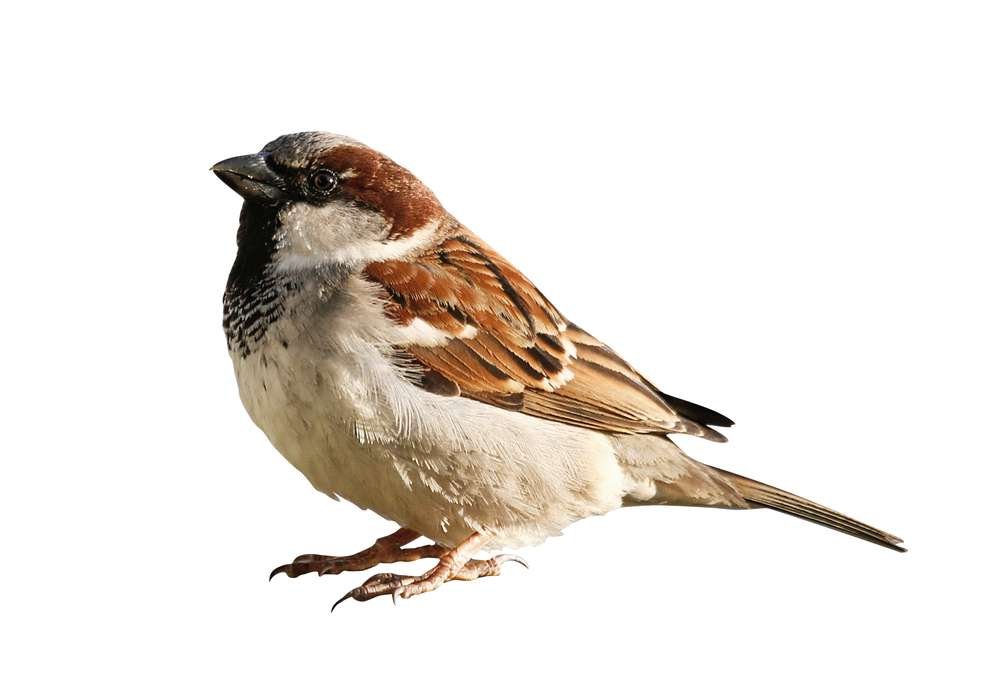House Sparrow
( Mampolyo )
- Passer domesticus
- IUCN Status: Least Concern
- Trend: increasing

- Phylum: Chordata
- Class: Aves
- Order: Passeriformes
- Family: Passeridae
- Genus: Passer
Share:
General Information
The House sparrow is a very common bird that was introduced to Zambia. It can most often be seen in urban areas as they are opportunistic feeders that stay close to humans.
Fun Facts!
The extent of the House sparrow makes it the most widely distributed wild bird on the planet. It was introduced to most parts of the world and In many parts, it has been characterised as a pest, and poses a threat to native birds. They are also very smart and opportunistic feeders that can perform complex tasks to get their food.
Description
The house sparrow is a compact bird with a full chest and a large, rounded head. Females usually are slightly smaller than males. The plumage of the house sparrow is mostly different shades of grey and brown. The sexes exhibit strong dimorphism in colouration of beak and other features.
- Wingspan: 19 – 25 cm
- Weight: 24g - 39.5g
- Lifespan: up to 23 yrs recorded so far
Ecology and Behaviour
The house sparrow is a very social bird. It is gregarious during all seasons when feeding, often forming flocks with other species of birds. It roosts communally and while breeding nests are usually grouped together in clumps. House sparrows also engage in social activities such as dust or water bathing and “social singing”, in which birds call together in bushes. The house sparrow feeds mostly on the ground, but it flocks in trees and bushes. At feeding stations and nests, female house sparrows are dominant despite their smaller size, and they can fight over males in the breeding season
Diet
As an adult, the house sparrow mostly feeds on the seeds of grains and weeds, but it is opportunistic and adaptable, and eats whatever foods are available.
Reproduction
House sparrows can breed in the breeding season immediately following their hatching, and sometimes attempt to do so. Some birds breeding for the first time in tropical areas are only a few months old and still have juvenile plumage. Birds breeding for the first time are rarely successful in raising young, and reproductive success increases with age, as older birds breed earlier in the breeding season, and fledge more young. Clutches usually comprise four or five eggs, though numbers from one to 10 have been recorded. At least two clutches are usually laid, and up to seven a year may be laid in the tropics or four a year in temperate latitudes. When fewer clutches are laid in a year, especially at higher latitudes, the number of eggs per clutch is greater. Central Asian house sparrows, which migrate and have only one clutch a year, average 6.5 eggs in a clutch. Clutch size is also affected by environmental and seasonal conditions, female age, and breeding density.
Conservation
It is listed by the International Union for Conservation of Nature (IUCN) as a, “Least Concern”. The house sparrow’s main predators are cats and birds of prey, but many other animals prey on them, including corvids, squirrels, and even humans—the house sparrow has been consumed in the past by people in many parts of the world
Distribution and Habitat
The house sparrow originated in the Middle East and spread, along with agriculture, to most of Eurasia and parts of North Africa. Since the mid-19th century, it has reached most of the world, chiefly due to deliberate introductions, but also through natural and shipborne dispersal.
Interaction with humans
The house sparrow is closely associated with humans. Usually, the house sparrow is regarded as a pest, since it consumes agricultural products and spreads disease to humans and their domestic animals. Even birdwatchers often hold it in little regard because of its molestation of other birds. In most of the world, the house sparrow is not protected by law. Attempts to control house sparrows include the trapping, poisoning, or shooting of adults; the destruction of their nests and eggs; or less directly, blocking nest holes and scaring off sparrows with noise, glue, or porcupine wire. However, the house sparrow can be beneficial to humans, as well, especially by eating insect pests, and attempts at the large-scale control of the house sparrow have failed
No donation to this project yet.
| M | T | W | T | F | S | S |
|---|---|---|---|---|---|---|
| 1 | 2 | 3 | 4 | 5 | 6 | |
| 7 | 8 | 9 | 10 | 11 | 12 | 13 |
| 14 | 15 | 16 | 17 | 18 | 19 | 20 |
| 21 | 22 | 23 | 24 | 25 | 26 | 27 |
| 28 | 29 | 30 | 31 | |||


